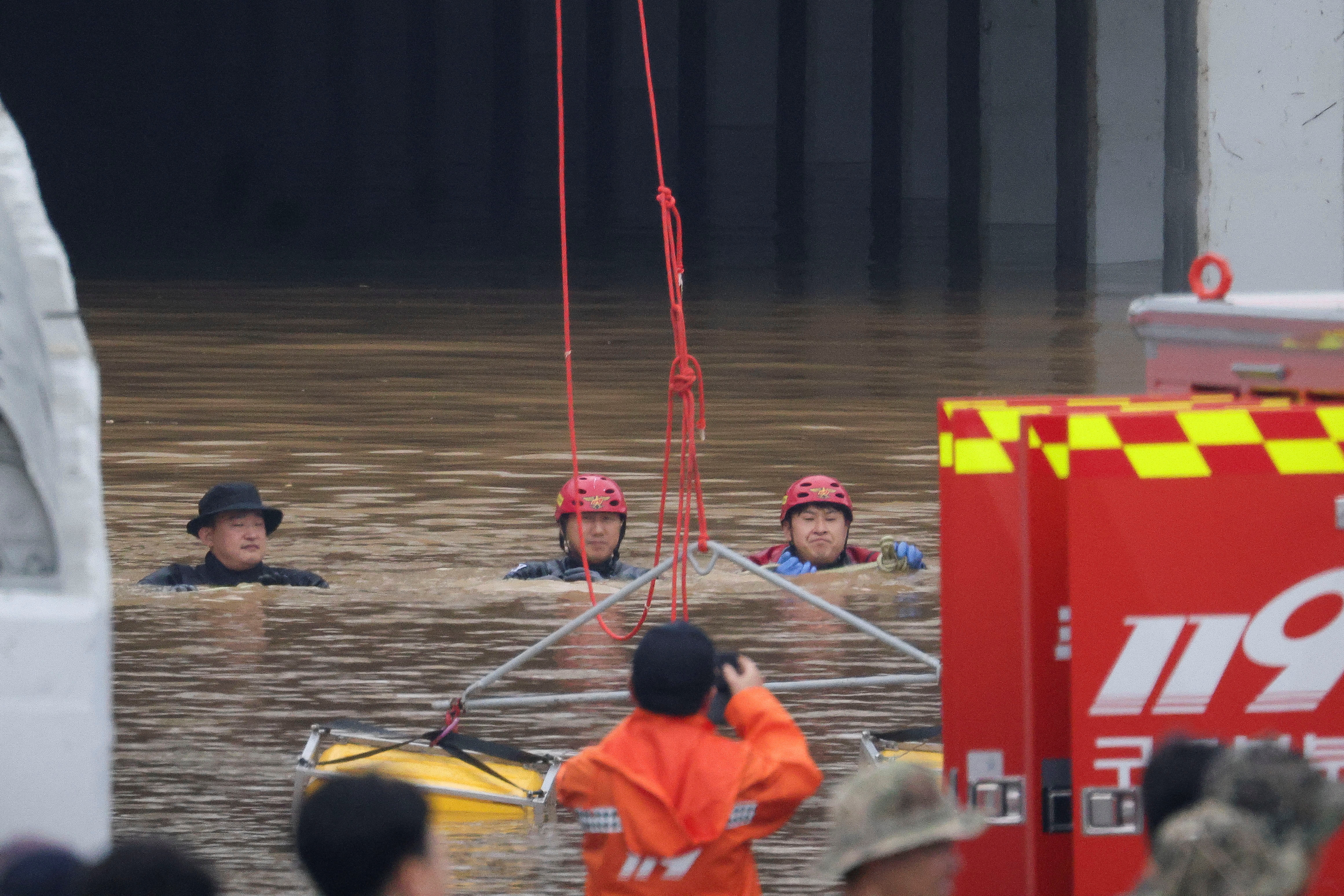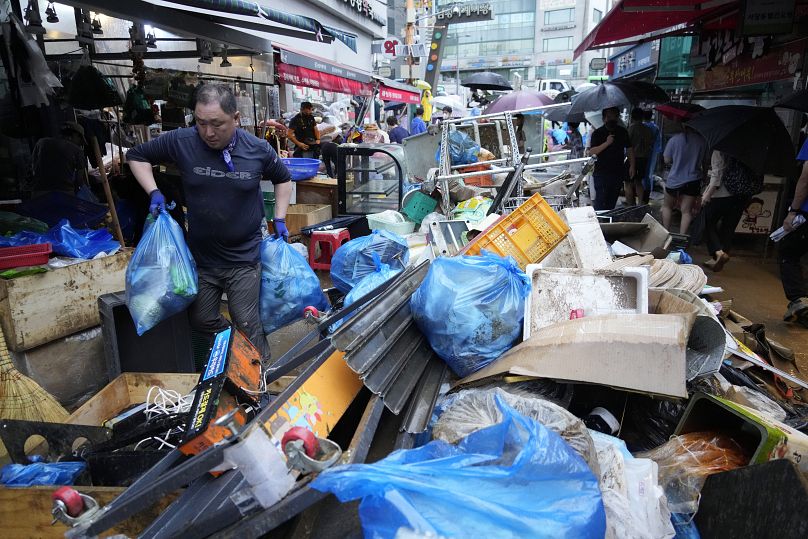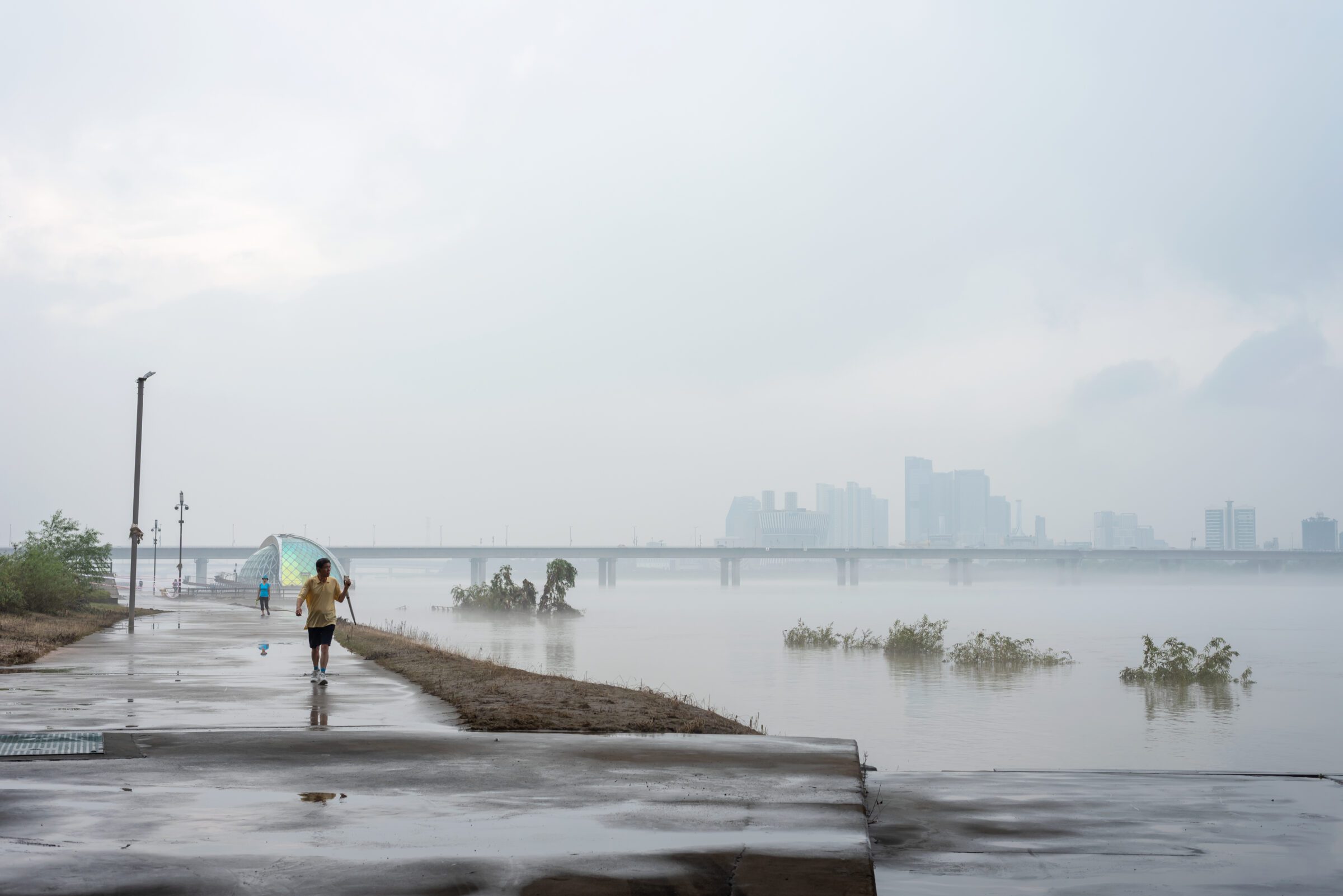Heavy Rains in South Korea Cause Widespread Devastation

At least four people have died and 1,382 residents have been evacuated across South Korea following torrential rains. The downpours, which began on Wednesday, July 16, 2025, have particularly impacted the South Chungcheong province, with some areas experiencing rainfall levels not seen in over a century.
Record Rainfall in South Chungcheong

The province of South Chungcheong has been the hardest hit, with record-breaking hourly rainfall. Seosan, a city within the province, recorded a peak rainfall of 114.9 millimeters (4.5 inches) per hour on Thursday, July 17, 2025. This level of rainfall is considered a once-in-100-year event and marks the highest rate since records began in 1904. By Thursday morning, Seosan had accumulated nearly 440 mm (approximately 17.3 inches) of rain, which accounts for 35% of its average annual rainfall.
Other Severely Affected Areas

In addition to Seosan, other areas in South Chungcheong have also experienced significant rainfall. As of Thursday, July 17, 2025, Hongseong recorded 411 mm of rain, Dangjin saw 376.5 mm, and Asan experienced 349.5 mm.
Landslides and Infrastructure Damage

The heavy rains have triggered multiple landslides across the region. In Cheongyang-gun, South Chungcheong Province, two people were injured after being buried under a landslide, sustaining leg injuries.
Widespread Flooding and Disruption

Urban areas have experienced widespread flooding, leading to the submersion of markets, apartment complexes, and vehicles. Cleanup efforts are currently underway in many of the affected areas. The Ministry of Education reported that approximately 403 schools were closed, with 166 reporting property damage due to the floods.
Transportation Impact

The Interior Ministry took precautionary measures by restricting access to nearly 80 underpasses, riverside roads, and low-lying bridges in the Chungcheong region to ensure public safety. The heavy rain also led to the cancellation of 46 flights across the country.
Initial Fatalities and Events Leading to the Crisis

The heavy rain began on Wednesday, July 16, 2025, resulting in initial fatalities. One person died in Osan when a retaining wall collapsed onto their car. The situation worsened on Thursday, July 17, 2025, with multiple deaths reported and widespread evacuations initiated. The record hourly rainfall in Seosan was also recorded on this day.
Ongoing Warnings and Current Status

As of Friday, July 18, 2025, the safety ministry reported a total of four deaths and over 1,300 evacuations. Torrential rain warnings remain in effect for western and southern regions of South Korea.
Context: Monsoon Season and Climate Change

South Korea typically experiences monsoon rains in July. However, the current rainfall is exceptionally heavy. The Korea Meteorological Administration (KMA) has described the event as the heaviest in 120 years in some regions. Prior to the heavy rains, South Korea experienced a period of record-breaking heat in early July. The KMA has noted that extreme heat can lead to atmospheric instability, which can then trigger intense downpours. The government has previously attributed extreme weather events to climate change.
Stakeholders Involved

Several stakeholders are involved in responding to the crisis:
- Victims and Evacuees: Residents directly affected by flooding, landslides, and property damage, including those who have lost loved ones.
- Ministry of Interior and Safety: The primary government body responsible for disaster response, reporting casualties, and coordinating evacuations.
- Korea Meteorological Administration (KMA): The national weather agency, providing forecasts and attributing the heavy rains to "warm and moist air flowing in along the edge of the North Pacific High, triggering strong atmospheric instability."
- Local Governments (e.g., South Chungcheong Province): Implementing evacuation orders and managing on-the-ground rescue and cleanup efforts.
- Emergency Services (Police, Fire Officials, Rescue Crews): Involved in search and rescue operations, clearing roads, and assisting affected citizens.
- Ministry of Education: Responsible for school closures and assessing property damage to educational facilities.
Key Statements and Reports
The Ministry of Interior and Safety confirmed that "at least four people have died" and "1,382 residents from their homes" as of Thursday, July 17, 2025. The KMA stated that the rainfall in Seosan was "a level typically seen only once in 100 years" and the "highest rate since full records began in 1904." The KMA also noted that the nearly 440 mm of rain in Seosan is equivalent to 35% of the region's average annual rainfall. Some affected residents have described the scenes as "heartbreaking," expressing feelings that "the world was collapsing."
Concerns and Public Reaction
The extreme intensity and record-breaking nature of these downpours have raised concerns about South Korea's preparedness for increasing climate change impacts. The government had previously acknowledged climate change as a factor in extreme weather. Residents are dealing with significant property loss and disruption to daily life. There is widespread shock and devastation, with some expressing being overwhelmed by the scale of the damage.